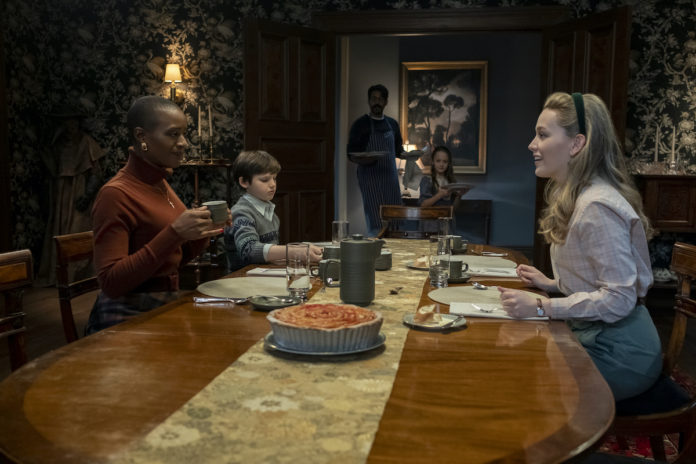
The Haunting of Bly Manor begins with the narrator (Carla Gugino) passing time at a wedding rehearsal. “I know a ghost story,” she says. With that, The Haunting of Hill House chapter is closed, and so begins the beautiful and horrifying haunting of Bly Manor.
Horror fans have fallen at creator Mike Flanagan’s feet for years—he also directed and edited Hush, Gerald’s Game and Ouija. In the Haunting series, fans look forward to searching for his signature touch: hidden ghosts in the background of almost every other scene—not contributing to the plot, but lurking in the background—unbeknownst to the ensemble.
Flanagan paints the delicious illustration that in his horror universe, these omnipresent ghosts are not just flickering lights and moving dinnerware, antagonizing inhabitants. Most of the time, they are just there—watching, alone.
Of course, many fans have expressed their doubts about this season, as it skipped many of the jump scares and gruesomely disturbing images (i.e. the Bent-Neck Lady) that The Haunting of Hill House was known for—but Flanagan has illuminated something much scarier than floating top-hats and a luring house in Bly Manor.
The true horror of this season is its depiction of the ugly underbelly of love—a reminder that we are subject to the daggers and swords that come with its vulnerability and trust.
Flanagan takes viewers to the crevices and corners of the manor, where romantic love is rotten, manipulative, and toxic. We are shown the consequences of sisterly love turning sour, curdling into jealousy, vengeance, and resentment. We see the haunting fallout of a relationship founded on love but supported by a lie. For the deadly sin of abusing the power of love, each character who indulges pays the ultimate price: entrapment.
That being said, for every time love and friendship are abused in The Haunting of Bly Manor, we are shown the ways in which it may prosper if nourished properly. We see the beauty of love between a mother and daughter and the hope and perseverance it allows through turmoil, the absolute and never-ending love of two women who see each other for who they truly are, and the unspoken and wanting friendship that allows escape for a captive housekeeper. In all the ways that love rears its ugly head, the ways in which it may blossom when treated carefully are also shown.
It goes without saying that The Haunting of Bly Manor has produced one of the most meaningful and touching LGBTQ+ relationships on television this year between new-girl-in-town Dani (Victoria Pedretti) and the sarcastically clever Jamie (Amelia Eve/Carla Gugino). For this, I offer hats off to creator Flanagan for creating a second series in which women-loving-women are represented in the genre; a treat for those who love the horror genre, despite the overwhelming persistence of heteronormative narratives in the more popular and classic horror stories.
Similarly, The Haunting series’ fans enjoyed a fabulously diverse and talented cast for its second season and were also treated by the return of several fan favourites from The Haunting of Hill House.
As suggested in the show’s final episode, The Haunting of Bly Manor is no ghost story—it’s a love story. Its nourishment and its starvation, its selflessness and its selfishness, it being conditional and unconditional.
This delicate game of tug-of-war provides more than enough horror for 10 episodes. Ultimately, not all of us might move into an old house only to discover its previous owners never left. But love finds us all—and there is no escape when it gets a grip on you.
Featured image from IMDb.





